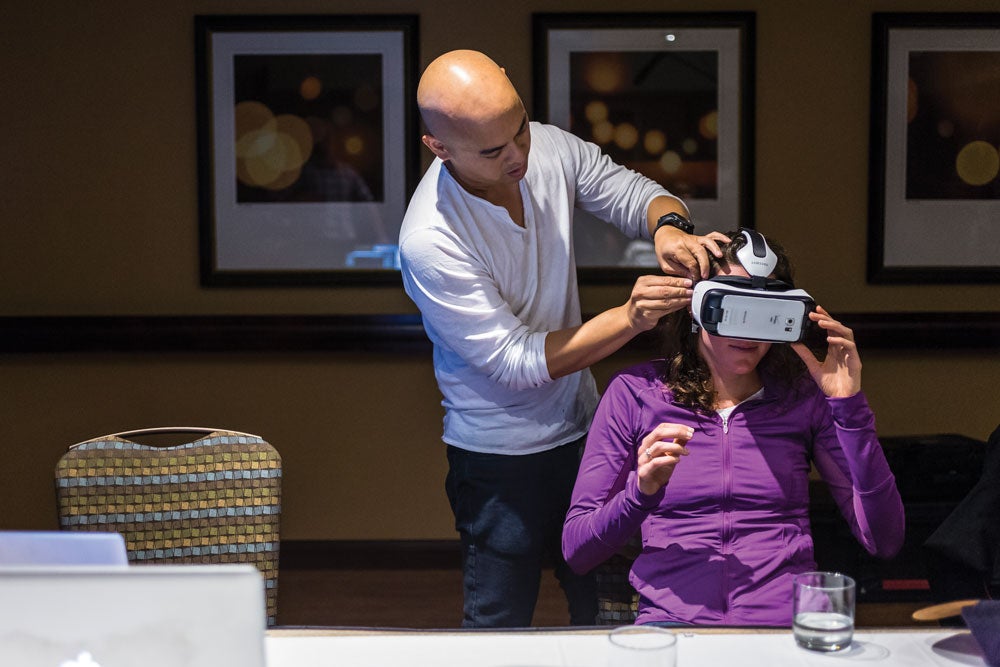How Gwen Jorgensen Used Virtual Reality to Prepare for Rio

Jorgensen uses the virtually reality technology. Photo: Garth Milan/Red Bull Content Pool
Virtual reality is shaping up to be the ultimate performance enhancer, no movement necessary.
En route to her gold medal during last year’s Rio Olympic Games, triathlete Gwen Jorgensen maneuvered around tight corners in a highly technical bike course as if she’d ridden them many times before. And in a way, she had. That’s because in addition to traditional mental training, like visualization and meditation, Jorgensen also used a custom-made virtual reality (VR) program, allowing her to repeatedly experience the Rio bike course from the comfort of her couch at her home.
“VR as a training tool has transformed the way athletes are preparing for competition,” says Danny Belch, a VR expert who works at STRIVR Labs, a VR performance science company founded by Stanford University researchers and based in Palo Alto, Calif. So much of the psychological stress—which zaps precious physical energy—associated with racing is related to the unpredictability of what lies ahead. VR helps to alleviate that stress by allowing athletes to simulate just about every race-day situation imaginable—from steep descents, to flat tires, to getting passed by a competitor late in the run.
While some VR products allow an athlete to simulate while on an indoor bike or treadmill (think: riding/running while the course is on a high-definition television screen), those offering the most intense 360-degree experiences—via a headset—are currently only for use while stationary, though this is likely to change quickly as the technology improves.
“Training with VR prepares athletes to react, and to react quickly, to a whole manner of race-day situations because the brain realizes it’s been in this situation before,” Belch says. VR’s power lies in its ability to give athletes hundreds, or even thousands, of extra repetitions in an environment that feels extremely real. The intensity of the experience is what makes it such an effective training tool; it’s like visualization on steroids.
“Professional athletes often just close their eyes and imagine what is going to happen, running through different scenarios,” says Belch. “VR can actually put you back in the race at any time, anywhere and in any situation.”
Pro athletes have been the first to try VR headsets, which currently look like a combo of old-school ski goggles and large over-ear headphones. (Jorgensen worked with RedBull to design her rig.) According to Belch, the rest of us should be able to get our hands on the first commercially available products from STRIVR Labs sometime later this year.
Expect to see software for biking and running first. Belch says sports that involve a lot of full-body movement, like swimming, are tricky to program. That said, the technology is evolving fast, so odds are it won’t be long before you can simulate an entire triathlon—maybe even including the pre-race wetsuit shimmy.